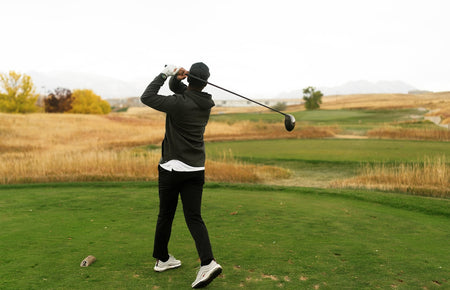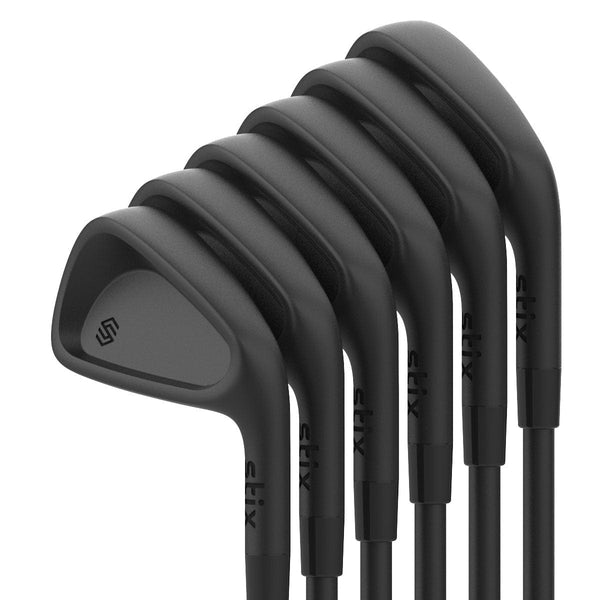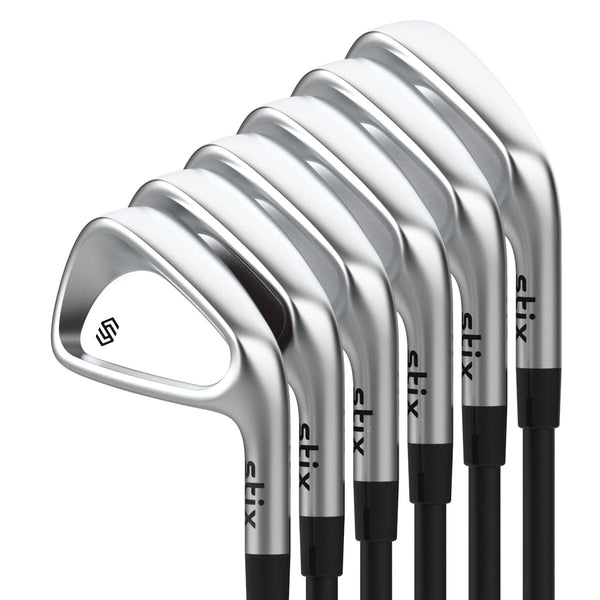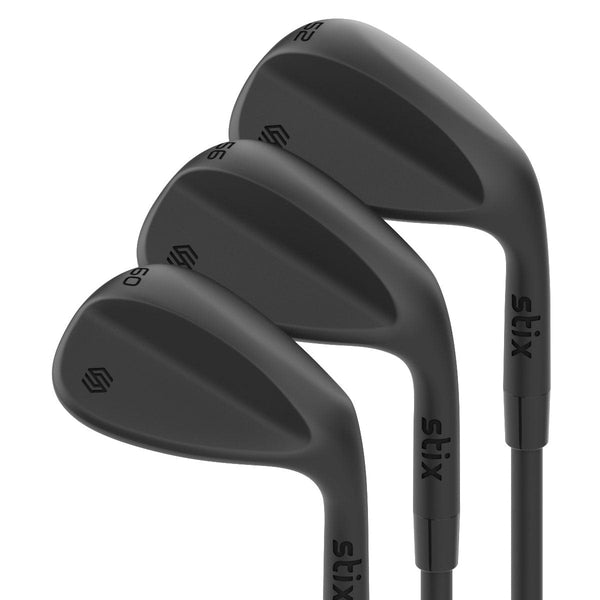Grip it and rip it – that's the motto for most golfers when reaching for their driver off the tee. The driver's purpose? To rocket the ball as far as possible down the fairway. Yet, the game of golf isn't always about sheer distance, a fact that nudges some players to wield a trusty 3-wood instead.
You’ll find a lot of complicated reasoning out there for when you should use a 3-wood vs. a driver off the tee, but we’re going to keep it simple in this post. We’ll break down the basics of each club, look at how they compare side-by-side, and share some scenarios of when to use a 3-wood vs. a driver off the tee.
Basics of a Driver
Your driver is the club with the longest shaft and largest clubhead, designed for maximum distance off the tee. This is the most common club to use right off the tee. Drivers are technically part of the “wood” family of clubs and are considered the 1-wood.
The clubhead of a driver has a low loft, which means the face is angled more horizontally, providing less vertical lift on the ball. The lower loft helps achieve greater distance but can make it more challenging to control the direction of the shot compared to other clubs with higher lofts.
Learn more about Stix all black 460cc Driver →
Basics of a 3-Wood
Like the driver, woods are designed for distance shots, primarily off the tee or when hitting the ball from the fairway on long holes. The number "3" in 3-wood indicates the club's loft, which is slightly higher than a driver but lower than higher-numbered woods like the 5-wood or 7-wood.
The 3-wood has a smaller clubhead and a shorter shaft compared to the driver. The clubhead's loft is generally around 15-18 degrees, which provides a bit more vertical lift on the ball than the driver, making it slightly easier to control the trajectory and direction of the shot.
Driver vs. 3-Wood
Here are some of the main differences between a driver and a 3-wood.
Clubhead Size
The driver has the largest clubhead of any golf club, with the largest driver clubhead size clocking in at 460cc. Its oversized clubhead provides a larger hitting area which allows golfers to generate maximum distance off the tee. Greater clubhead size also means greater forgiveness on less-than-perfect shots. On the other hand, the 3-wood has a smaller clubhead compared to the driver, making it more versatile for use both off the tee and on the fairway.
Shaft Length
The driver's shaft is longer than the 3-wood, typically around 45” compared to 43”, respectively. The longer shaft length contributes to greater clubhead speed and distance potential. It also allows golfers to generate more power, but it can also make the driver more challenging to control for some players. The shorter shaft of the 3-wood makes it more manageable and easier to control.
Learn more: Golf Club Length: Which Size is Right for You?
Average Distance
The average distance achieved with a driver is typically between 200 to 250 yards. Skilled or professional golfers with higher swing speeds may achieve distances well over 250 yards, often exceeding 300 yards or more. On average, golfers achieve a slightly shorter distance with a 3-wood. The average distance achieved with a 3-wood is usually between 180 to 230 yards. Skilled golfers might hit the ball with a 3-wood over 230 yards, while some recreational golfers may hit it closer to 180 yards.
When to Use a 3-Wood Off the Tee
Here are some situations where you might want to use a 3-wood off the tee.
On Narrow Holes
On holes with tight or narrow fairways, using a 3-wood can offer better accuracy compared to a driver. The smaller clubhead and shorter shaft of the 3-wood make it easier to control the shot, reducing the chances of hitting the ball out of bounds or into hazards.
On Shorter Holes
Golfers often use the 3-wood in situations where they need a balance of distance and control, such as when they want to hit the ball off the tee on shorter holes like a par 3.
On Hazardous Fairways
If there are hazards like bunkers, water, or thick rough in the landing area where a driver might carry the ball, using a 3-wood can help you play short of the hazards and avoid potential trouble.
On Complex Holes
On holes where accuracy and placement are more important than pure distance, a 3-wood is wise. You’ll be able to position the ball strategically on the fairway, setting up a better approach shot to the green.
When to Use a Driver Off the Tee
Here are some situations where a driver might be better for teeing off.
On Long Holes
On par 4 and par 5 holes that are relatively long, using a driver allows golfers to get the ball closer to the green in fewer shots. Its low loft and longer shaft can generate high clubhead speed, leading to longer drives.
On Wide Fairways
On holes with generous fairways and minimal hazards, a driver is an excellent choice. Golfers can take advantage of the open space to hit the ball with power and distance without worrying too much about accuracy.
In Favorable Wind Conditions
When playing with a tailwind (wind blowing in the same direction as the golfer's shot), the driver can amplify the distance achieved off the tee.
In a Competitive Setting
If you’re in a competitive setting, such as in match play or when trying to catch up in a stroke play event, using a driver can help you gain distance and potentially put pressure on your opponents. High risk, high reward.
Be Prepared
Drivers are designed for maximum distance and are best suited for use off the tee on long holes with wide fairways, where accuracy is less of a concern. The 3-wood is a more versatile club, offering a blend of distance and control, making it useful both off the tee and from the fairway in various situations. In short, both drivers and 3-woods are great clubs to use off the tee–it just depends on the situation and the type of shot you’re trying to achieve. A smart golfer always keeps both types of clubs in their bag so they’re ready for anything the course throws at them.
Shop Stix complete 12-club golf club set →
You might also like:






